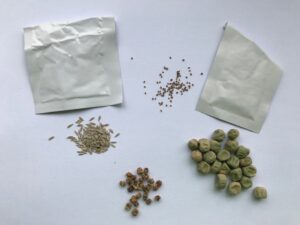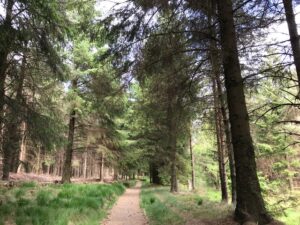This month’s topic is borders  and I don’t mean flower borders. It relates directly to the FAO’s key message 1 http://www.fao.org/plant-health-2020/about/en/ “Be careful when bringing plants and plant products across borders”. It’s relevant in August as many people will have travelled on holiday but I also want to ponder a little on the function and value of borders relating to protecting plant health.
and I don’t mean flower borders. It relates directly to the FAO’s key message 1 http://www.fao.org/plant-health-2020/about/en/ “Be careful when bringing plants and plant products across borders”. It’s relevant in August as many people will have travelled on holiday but I also want to ponder a little on the function and value of borders relating to protecting plant health.
You may have seen the recent “Don’t risk it” campaign at some UK airports https://www.gov.uk/government/news/public-urged-not-to-bring-plant-pests-and-disease-into-the-uk. Similar advice is given by many other countries worldwide to protect their land from travellers bringing in plant pests and disease. Details of what you legally can and cannot bring into the UK can be found at https://planthealthportal.defra.gov.uk and new regulations are in place in 2020 under the Smarter food for safer food initiative. While most of this guidance relates to trade, all of us as members of the public can help by considering our actions when travelling and raising awareness in others.
A related complex issue is how regulations can be applied to plants and plant products traded on the internet and this includes wood, wood products and even the pallets transporting other goods. Buying products online is now easy; plants, furniture, seeds and other products can be sourced and purchased from abroad. The normal process requires certification to verify their source but if inaccurate information is given, border control could be bypassed. 
Such a case is currently under investigation; this month, social media and newspaper articles reported that people in several countries have received mystery seeds in the post. Anyone receiving this unsolicited mail is advised not to plant them and to report them to the authorities while the source is investigated. https://twitter.com/plantchief/status/1291645088184098818?s=21
When I thought about writing on this topic, I wondered what defines a border and how do we use them in plant health protection? It’s obvious when it relates to national borders where responsibilities rest with governments on either side to monitor imports and exports.  The work that the animal and plant health and seed inspectors do at border controls is critical and offers a varied career for biologists https://www.gov.uk/government/news/apha-launches-first-plant-health-apprenticeship-scheme. However, national borders are distributed irrespective of consideration to plant health. Pests and pathogens can bypass border controls carried by air and water as well as on people and, as just described, through the postal system.
The work that the animal and plant health and seed inspectors do at border controls is critical and offers a varied career for biologists https://www.gov.uk/government/news/apha-launches-first-plant-health-apprenticeship-scheme. However, national borders are distributed irrespective of consideration to plant health. Pests and pathogens can bypass border controls carried by air and water as well as on people and, as just described, through the postal system.
It’s clear that we can’t rely totally on national borders to protect the environment from new outbreaks, but we can all be aware of the impact of moving plants around. Recently my daughter visited us in Yorkshire from London and she, now with some balcony space for growing plants,  is excited to have new plants to grow. I was equally excited to pot up some plants from my garden for her. As I started this, I thought “Can I be sure plants in my garden won’t transmit pests and disease?” What if Yorkshire soil transfers something undesirable to London?”. With disappointment, I stopped repotting and decided to recommend good plants and suppliers to her – most likely I will also pay for these, but willingly of course.
is excited to have new plants to grow. I was equally excited to pot up some plants from my garden for her. As I started this, I thought “Can I be sure plants in my garden won’t transmit pests and disease?” What if Yorkshire soil transfers something undesirable to London?”. With disappointment, I stopped repotting and decided to recommend good plants and suppliers to her – most likely I will also pay for these, but willingly of course.
I don’t suggest that people should never share plant cuttings in future, nor that there is a border between London and Yorkshire, but my point is to raise awareness that moving plants and soil around could unwittingly
impact plant health.  The Forestry Commission is promoting this message too encouraging people to wash their boots after a walk in the forest. Free online training resources on biosecurity are available at https://www.forestryelearning.org.uk
The Forestry Commission is promoting this message too encouraging people to wash their boots after a walk in the forest. Free online training resources on biosecurity are available at https://www.forestryelearning.org.uk
The international year of plant health is an opportunity to have these conversations and think about our practices. We can’t eliminate the spread of all disease but some of the changes we make will help. If a reminder is needed of why we need to do this, here’s a new 2 minute video from the John Innes Centre about why the UK is trying to stop Xylella from entering where it could cause serious damage to hundreds of plant species. http://pic.twitter.com/0N5oSapzuQ
